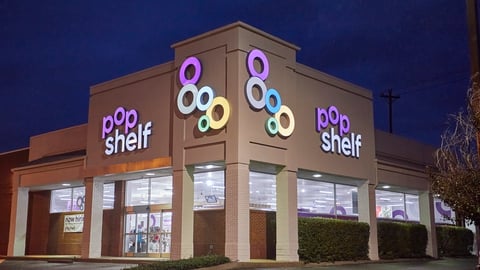A Fresh Breath of Open-Air
Two years after COVID-19 shuttered everyone in their homes, had shopping center tenants questioning their survival, and got pundits holding funerals for brick-and-mortar and predicting e-com dominance, a remarkable realization occurred. The pundits were dead wrong. Online sales hit a high point of around 15% of total retail sales and stayed there. Physical retail, it turned out, proved itself to be the essential engine of the omnichannel machine.
As we predicted at DLC in the fall of 2020, The Store Won.
In 2022 at DLC, as an owner-operator of more than 70 open-air centers in the eastern half of the United States, I am drawn to conclude that open-air is the chief piston in that engine. In Austin, we acquired a shopping center on March 30 and we signed an anchor lease the very next day. Some top fitness brands succumbed at the start of the pandemic and filed for Chapter 11. Yet in the last few months we signed multiple leases with Planet Fitness, and have additional leases pending with Planet, Crunch, and LA Fitness. Truly, I can’t remember the last time a retailer went to committee with a lease deal we negotiated and didn’t come back with an approval. We are averaging three-to-five new leasing deals per week, an historical amount. The market has done a 180-degree turn. We’re running out of boxes to lease.
Everyone in retail real estate is aware of the chief challenges we face now: supply chain and inflation. If you’ve been doing this as long as I have, you’ve dealt with inflationary periods many times in the past. Today’s supply chain issues are simultaneously expanding lead times and crushing profit margins for those of us who build and maintain shopping centers and the tenants who inhabit them. It’s forcing more of us to become more resilient and agile in how we deal with the scarcity of materials and labor and how we get spaces built out.
We made a deal with a tenant who ran a Wingstop restaurant in one of our Texas centers who wanted to relocate to a bigger space. He’s doing a great business and knew he could do even more in a bigger space into which he could fit more fryers. So we make the deal and, not long after, he comes back to us and asks to delay it for four months. Now that he had the extra space, he couldn’t get the extra fryers! Wait times for specialty equipment have become extended by months and months. Even the lead times for basics like steel joist has ballooned out to as much as 40 weeks!
It’s getting harder to pencil in a leasing deal, but we find new ways to get it done for our retailer clients. It’s come to a point where our tenants are going to have to either pay more rent or do more of the work themselves--or pay for it themselves and value-engineer their specifications. We are seeing a multitude of variations of meeting these challenges by continuously partnering with our retailer clients.
Smart retailers have adjusted their thinking and their normal operations to accommodate the situation. One forward-thinking tenant of mine from a retail chain with more than a thousand locations told me he’d bought the entire production of the specific HVAC units he uses from one manufacturer. He told us, “This is what I’m paying and you’re going to buy a piece of my guaranteed production.” And that’s what we did. His company had told Wall Street that they were going to open a certain number of stores and they intended to do it. We’ve built or are building eight stores for them by working together to defeat the supply chain.
Despite the terrible tragedies of the pandemic, some things came out of COVID that we think are good for the future of our business and the industry. In investment circles, retail is now recognized as multiple, distinct, sub-asset classes. There’s open-air retail, malls, and urban street retail. We at DLC benefitted from that because Wall Street has separated open-air from the mall sector, in which the default rate on loans was terrible. This is drawing capital AND tenants to our sector. We have done several deals with brands like Old Navy, Ulta, The Buckle, Signet Jewelers, and Bath & Body Works that moved out of malls to relocate in our open-air centers. This trend is still early days. We expect significant net absorption from mall to open-air transplants.
It’s become hard to find large open spaces in open-air centers over the past year. Brands like At Home, Macy’s Backstage, Burlington, Floor & Décor, and Dollar Tree that started their expansions sooner are sitting in their spaces. If you’re a retailer who’s contemplating passing on your option to renegotiate a lease in open-air, I’d urge caution. Your best bet is to exercise that option or people like me are going to lease to the next brand for much more.
May you all have a happy and healthy rest of 2022!







